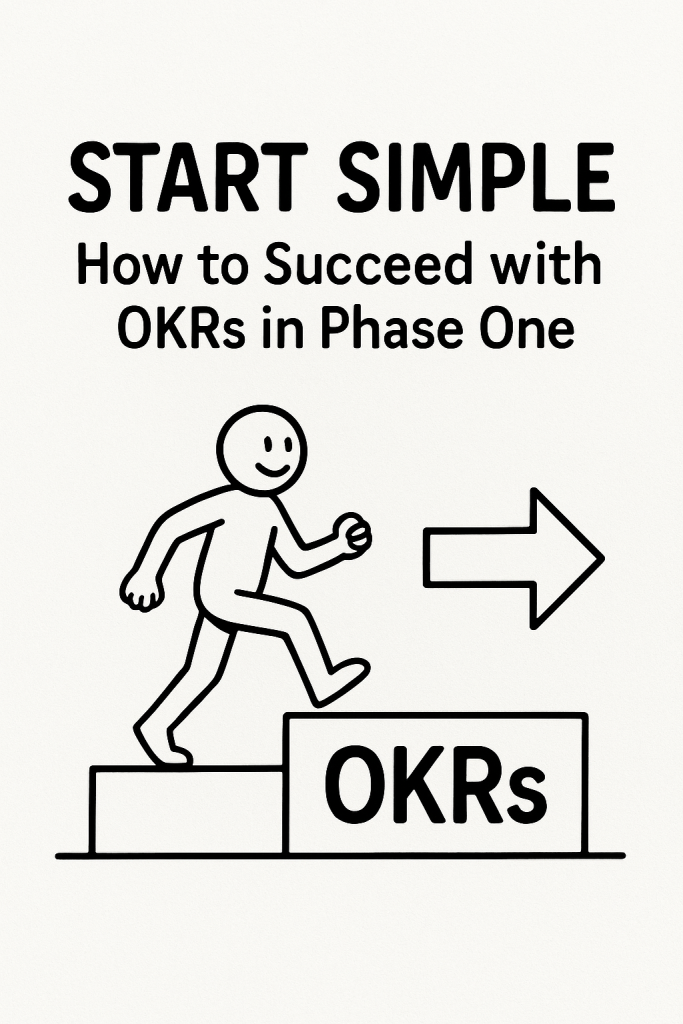Start Simple: How to Make OKRs Work in Phase One


Some honest words on what actually works when you’re rolling out OKRs for the first time.
Too many organizations fall flat on their first OKR attempt. Not because they lack ambition, but because they try to do too much, too broadly and too theoretically (semantics)
They launch with big visions, too many levels, endless workshops, and OKRs for everyone and everything. This can give organizational fatigue, blurred priorities and zero progress – this didn’t work for us…
OKRs are meant to drive execution – not to be a new layer of governance. So how do you actually make them work in the real world, especially in phase one?

Many studies (I have chosen McKinsey, 2015) show that up to 70% of change initiatives fail, often due to complexity and lack of focus.
Many think they have to involve the whole organization from day one. That’s a mistake. You don’t need breadth, you need momentum.
Choose one area with execution pressure and willingness. A team or department that wants more and is ready to prioritize.
A good pilot builds trust, results, and learning, everything you need to scale later.
Data shows organizations that start with small pilots are 2x more likely to scale successfully. (Bain & Company)
You don’t need 12 objectives and 47 key results at the start. You need one clear direction.
Create one strong objective people understand, and a few key results that show if you’re making progress. Don’t waste time on perfect wording (semantics), focus on getting people to use them.
OKRs should help you cut the noise, not add more of it.
Research shows that 83% of organizations using OKRs report improved prioritization and focus as the top benefit. (WhatMatters.com, Survey 2023)
Involvement is great, but without ownership, OKRs are just decoration.
Be clear about who owns progress. Who follows up? Who ensures direction and rhythm?
Not everyone needs their own OKRs, but everyone needs to know what they’re contributing to.
Research shows in over 85% of failed OKR implementations, unclear ownership was a key factor. (Harvard Business Review, 2020)
If OKRs don’t influence calendars, meetings, or priorities, they’re meaningless.
Ask this every week:
What are the top priorities we are doing this week that brings us closer to our goal?
Set up a simple WEEKLY check-in and make it a rhythm. No slides, just movement. And include it in existing meetings. Don’t start to create loads of new meetings
Insight from others shows that 62% of companies that do weekly or bi-weekly OKR check-ins report stronger execution. (WorkBoard, 2022)
OKRs shouldn’t be a performance report. They’re a learning loop.
At the end of the quarter, ask:
You don’t need to start over, you need to do more of what works.
Don’t overcomplicate it, don’t try to impress and just build something that actually works for your team or department. Start where the energy is and pick one team/dep, not the whole org
It’s not a perfect launch that drives results. It’s about creating a system for driving execution overtime that survives the reality of daily work.